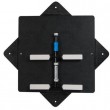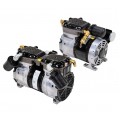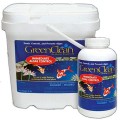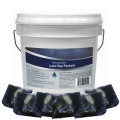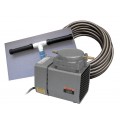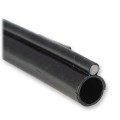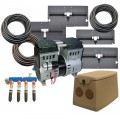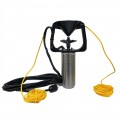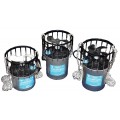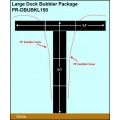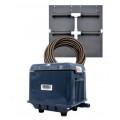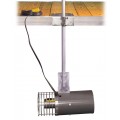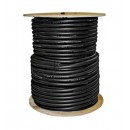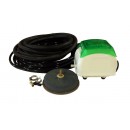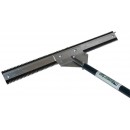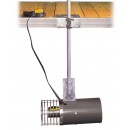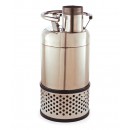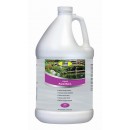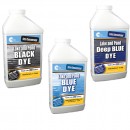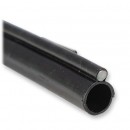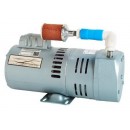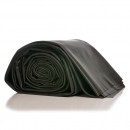Simple ways to protect your dock from pack ice damage and heaving winter lake ice.
Ever since I moved out to Thousand Island country and was surrounded by lakes with pond owners or lake cabin owners with docks and boat cribs I have been asked about protecting docks from ice damage. What I have learned over the years about installing a simple do it yourself dock system is that there are many different systems available that do basically the same thing.
The idea behind keeping ice away from the dock, boathouse or pilings is to reduce the damage caused by heaving ice floes and ice pressure buildup that can actually shift dock pilings and boat house structures resulting in some expensive repairs. I am often asked if it is possible to build or put together a cheap dock bubbler system and the answer is always "Yes!"
The principle of a keeping a dock or marina clear of ice is to ensure that the natural crushing pressure of ice is not able to squeeze the structure. Ice is so powerful that it can literally lift lake bed pilings out of their footings and toss them about like sticks. I have seen large yachts tied up in large Eastern Seaboard marinas suffer thousands of dollars of damage due to ice.
The sad part is that almost all cases of ice damage and dock damage are a result of negligence by eh owner or sheer laziness; installing a homemade dock deicer or dock bubbler is not really difficult but the key is to start preparing components and supplies early enough in the season, October or November, to not get caught without a viable system when the cold snap first falls and often surprises!
While ice usually forms in shallow or areas in lakes and ponds without circulation it is important to remember that early ice formations can occur in November in some areas.
While typical ice thickness will not maintain a constant spread until December in most Northern Latitudes the freezing of ponds can occur without warning so it is better to buy an inexpensive dock bubbler or build a dock deicer before it is in January and the ice is thicker than you'd like!
Types of deicers, ice eaters and Bubblers
The principal types of automatic systems for protecting marinas and docks from ice damage can be broken down into two main types: the submersed thruster or agitator and the dock bubbler.
Agitators involve placing a heavy-duty submersible motor that drives a rugged propeller in continuous duty to draw warm waters from the depths of the pond or lake towards the surface.
The warmer waters at the bottom of the pond usually maintain a temperature of around 4 degrees Celsius or 39 Fahrenheit and by bringing them rapidly to the surface in a directed thrusting stream they can keep large areas of open water even in the coldest of winter temperatures.
I have seen this sort of ice-eater literally open up solidly frozen areas in only a few hours.
Ice Eater® Dock Bubbler Deicers
 Price Includes USA Shipping Price Includes USA Shipping
The most energy efficient dock deicer is the Ice Eater® which uses a patented design and PVC flow director that circulates water to the surface, causing turbulence that reduces or eliminates ice formation around docks.
More info
3/4 HP - 25' cord
Ice Eater® P750 3/4 HP with 25 foot cord
Up to 60' diameter of open water
4.7 Amps - 115 volts
More Info and price |
1 HP - 25' cord
Ice Eater® P1000 1 HP with 25 foot cord
Up to 80' diameter of open water
7.0 Amps - 115 volts
More Info and price |
To see more Ice Eater® cord lengths and 230V options click here.
Kasco Agitator Thrust Deicers
 Best prices on Amazon Best prices on Amazon
Mounted in either a vertical or horizontal position, the de-icer circulates water to the surface, causing turbulence that reduces or eliminates ice formation.
Affiliate link: More info on Amazon Kasco store |
3/4 HP 3400D - 25' cord
Kasco 3/4 HP with 25 foot cord
More info |
1 HP 4400D - 25' cord
Kasco 1 HP with 25 foot cord
More info |
Bubbler Hose
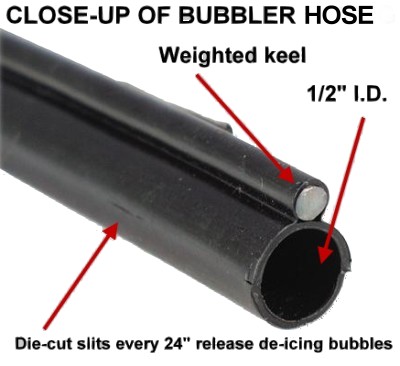
Weighted de-icer airhose/bubbler tube for deicing small and large areas. Weighted 1/2" I.D. tubing requires only 1 CFM per 100 feet (0.01 CFM per foot). Single runs of up to 200' can be used with even bubble flow. Flexible tubing has a lead-wire encapsulated in poly to act as a weighted keel, keeping the deicer tubing firmly on the bottom.
More info. |
125' Bubbler De-Icer Hose
One-hundred twenty-five feet of weighted deicer bubbler tubing
Price and options |
250' Bubbler De-Icer Hose
Two-hundre-fifty feet of weighted deicer bubbler tubing
Price and options |
Dock Bubbler Packages
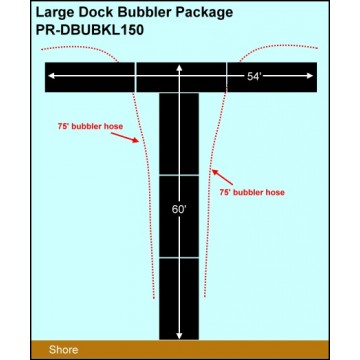 Price Includes USA Shipping Price Includes USA Shipping
Some systems use self-weighted synergistic diffuser assemblies have some of the smallest and finest bubbles available in any diffuser and this means that you get the most lifting of water column towards the surface and less pressure loss during operation. Using the proper diffuser or perforated hose for bubbling makes all the difference in protecting a boat or a seawall.
. More info |
Small Dock Bubbler
Includes 125' weighted bubbler hose, 1/3 HP piston compressor, 25' weighted feeder line, clamps and connectors included
More Info |
Large Dock Bubbler
Includes 250' weighted bubbler hose, 1/3 HP piston compressor, 25' weighted feeder line, clamps and connectors included
More info |

Secure Shopping with Credit Card or Paypal®
More products available at the Pond Report Store
|
|
This sort of deicer works best when you have deeper waters around the dock but keep in mind that even an agitator aimed at the shallow shoreline, if it originates in waters of say 12 feet deep, can create a large opening under the entire dock structure.
The size of the opening in the ice depends on the overall ambient air temperature but typically even a 1/2 HP or 3/4 HP device can open up a hole in the ice up to 60 feet in diameter.
When it is desirable to prevent ice damage in large marinas or yacht clubs over winter several units can be combined together to create a huge current that will open upon incredibly large amount of water.
These units can either be suspended below the dock or pilings by nylon mooring ropes or can be attached to some sort of dock mount system.
Several manufacturers, like Kasco Marine, offer high quality dock mount apparatus that allow you to strictly control the angel of attack of the deicer unit by using a graduated bracketing system.
When a dock is in shallow waters the popular deicer or ice eater may not work as well because this sort of motor needs to push warmer waters to the surface in order to be effective. When waters are 6 feet deep or less there is less temperature stratification in the water and even the water at the very bottom can be too cold to effectively melt surface ice. While the agitation of the water will keep a small hole open even when trying to deice a shallow area the diameter of the hole is typically smaller.
In shallow waters the most popular system is called a bubbler or a dock bubbler. This sort of system involves an air compressor on the dock or shore mounted that blows air into diffusers or a diffuser line like a diffuser line, de-icing hose or bubbler line or deicer tubing which is a weighted perforated tubing that releases tiny bubbles down the length of the tubing.
The long linear length of bubbles creates a constant movement of water and this steady flowing curtain of bubbles ensures that there is no ice formation along the dock structure or boat slips.
Previous generations of weighted tubing were lead-lined stiff plastic PVC tubing with die cut slits ever 12 to 18 inches. I have found this tubing to be susceptible to kinks and ruptures not to mention the lead metal keel that was designed to keep the tubing on the pond bottom actually used a poisonous metal which has since fallen out of favor with anyone concerned about the potential health effects of heavy metals in our water.
Newer developments in diffuser tubing have seen improvements in efficiency and safety by using all PVC diffuser tubing that contains zero metals. PVC is a polymer of vinyl chloride and is insoluble in most organic solvents. Such diffuser line, de-icing hose or bubbler line, being constructed of vinyl resins, which are used in soft flexible films for food packaging and in molded rigid products, such as pipes, fibers, upholstery, and bristles, is a more environmental choice. Plus, the ability of such new diffuser tubing to remain flexible in cold temperatures makes it's use as a deicer tubing much more practical.
While the installation of such a dock bubbler system can be more labor intensive than the relative ease of installing a dock deicer, there are advantages.
A dock bubbler, because it uses an air compressor or regenerative blower, will cost less in electrical consumption compared to an ice eater agitator. Submersible motors run from 3 amperes to over 20 amperes depending on the horse power of the motor. An air compressor for a dock bubbler will run between 2 and 10 amperes.
When using diffuser lines to protect your dock from ice damage there will be some fairly common installation procedures: place the air compressor in a ventilated cabinet or shed.
Some turnkey deicer systems come standard with a lockable cabinet designed to resist salt water and rust but some cheap deicers or homemade deicers do not include or even mention the need for a protective housing for the compressor.
In our northern climates where winter temperatures near the Great Lakes can be a bone chilling minus 30 degrees for weeks on end it is essential to protect the compressor.
I have seen some inexpensive dock Bubblers that appeal to the do it yourself deicer types that claim that the compressor can sit on the dock without worry but that is a recipe for disaster!
The compressor could be damaged by severe weather or in the case of a power failure could be destroyed by the freezing of any condensation in the compressor housing so don't be fooled into thinking a small dock can use a small linear air pump that sits on the end of the dock.
From the blower or air pump a weighted line runs into the water. The line can be buried but if you are using a thick walled and high bore airline you can often get away with surface layout.
At the end of your airline you attach the diffuser line, de-icing hose or bubbler line or diffuser line which typically runs the length of the dock in need of protection. I sometimes recommend running multiple lines of tubing or a perimeter loop depending on the layout of the boathouse and boat slips involved.
Remember that variations in depth can affect the bubble flow of the diffuser tubing so it is better to use multiple lines if there are major deviations in depth around the marine or private dock. Sometimes even a variation of a few feet can inhibit the correct flow of air in a tubing. Since one PSI is equivalent to 2.3 feet of depth a difference of few feet could mean that air flow in the weighted tubing is restricted in the deeper areas and no bubbles are being released.
I have seen dock bubbler systems that include single lengths of tubing meant to be placed in a loop of over 400 feet and I have often seen large areas with no bubbles in such installations especially when undersized linear compressors are used. The temptation to buy a cheap bubbler are everywhere on the Internet but it is important to understand the limitations of the technology before leaning towards buying the cheapest system.
Of course, in larger marina projects, where hundreds of boat slips are involved and the dock structure is hundreds of feet of complex maze-like boat stalls a larger, more professional grade system is required. In projects like these we will install large high pressure, high CFM compressors to feed multiple lengths of 1/2 inch or 3/4 inch diffuser tubing. 3 HP to 5 HP compressor are not uncommon using a series of control manifold valves to control the airflow into multiple lines of diffuser bubbler hose.
Regardless of the system you choose it is wise to control the operation of the dock deicer or dock bubbler with a thermostat control that will only initiate operation of the motor when freezing temperatures warrant operation: usually when the air temperature is gist below the freezing threshold.
These inexpensive thermostats measure the outside air temperature and engage the air compressor or submersed thruster only when it is required. Another benefit of using a thermo control unit are the savings in electricity costs associated with the deicer.
Building your own deicer, do it yourself dock Bubblers
Send us an email describing your dock, marina or boathouse and our design team will submit an affordable bubbler plan or deicing strategy or take a look at our dock bubbler packages
Saving money is something most of us want to do and when confronted with the cost of a commercial de-icer I often hear people ask how they can build a cheap deicer or as me how to build a dock bubbler. It can be done but before you consider taking on the task ask yourself if it is really worth the time and effort to buy the parts required and, of course, the actual labor it entails to build a pond bubbler.
Industrial & Commercial Deicing
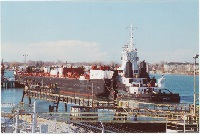 Our deicing experts have years of experience with design and installation of bubblers and de-icers in mining, stormwater, gas and oilsands and tailings ponds, ski hills, municipal docks and marinas and dam deicing and pumphouse deicing. Our deicing experts have years of experience with design and installation of bubblers and de-icers in mining, stormwater, gas and oilsands and tailings ponds, ski hills, municipal docks and marinas and dam deicing and pumphouse deicing.
Using the most efficient systems we can design or recommend the ideal deicing or bubbler system for any job, large or small.
Please contact us by email for industrial deicing jobs.
|
If your goal is to protect your dock and eliminate costly repairs from winter ice damage then you should weigh the cost benefits of purchasing a pre-designed system from a local expert.
If you are gung-ho about doing it yourself it is really not rocket science! Building a dock bubbler involves buying a cheap pump, adding some airline, and then adding a diffuser hose or even diffuser discs at strategic points under the dock or boat slips.
I've seen small deicers built for less than $600 dollars but I've also seen such systems fail due to poor design and costly boat and major dock repairs resulting!
Using standard PVC plumbing pipes and drilling holes with a hand drill is one way to avoid buying professional grade diffuser tubing but one errant drilling of a hole can result in catastrophic failure of the system. Pumping air through an open ended pipe, creating large coarse bubbles, will work to an extent but often the results are hit and miss.
Today's systems have undergone years of testing and while the temptation is often there to build a homemade bubbler is often nagging at our thrifty instinct I have seen such desires lead to more expenses that would have been involved in buying a dock bubbler from a reputable and experienced supply store.
Buying a dock bubbler or a de-icer
Buying a dock bubbler or a de-icer requires a certain level of expert knowledge. The Internet is full of websites that sell dock Bubblers and promote their simple systems and most claim that they do the job without issue. I have seen disappointment in many purchases because the retailer was more keen on selling their product than actually customizing a bubbler system to meet the specific needs of the clients particular situation.
In my years in helping solve pond issues I have seen my share of deicing projects. I don't sell de-icers; I leave the final shopping to those with the hard earned money.
There are so many options when it comes to dock deicing that it is crucial to use due diligence and to look for the best deal. But beware, the best deal isn't always the cheapest. I have seen some people save a few hundred dollars by buying a cheap deicer on eBay but then they got no service or tech support when things go wrong. My advice has always been: deal with a company that does more than sell products; make sure they have an actual store, with experienced technicians and a track record of knowing what they are doing.
There is more to doing the right thing than saving a few dollars; getting good advice and information is worth much more in the long run.
See our Bubbler Packages.
Shallow Dock Bubbler Systems
When using surface agitaors or linear bubbler hose as a bubbler system is not practical or too costly the diffused air de-icing systems can be installed eaily and provide effective protection from ice damage. Instead of long lengths of bubbler hose these systems use a more standard diffuser that sits on the bottom near the structure needing protection that releases larger coarse bubbles to the surface which can create less ice buildup and open waters to mitigate ice pressure damage to pilings or boathouses.
More info on diffused air dock protection systems
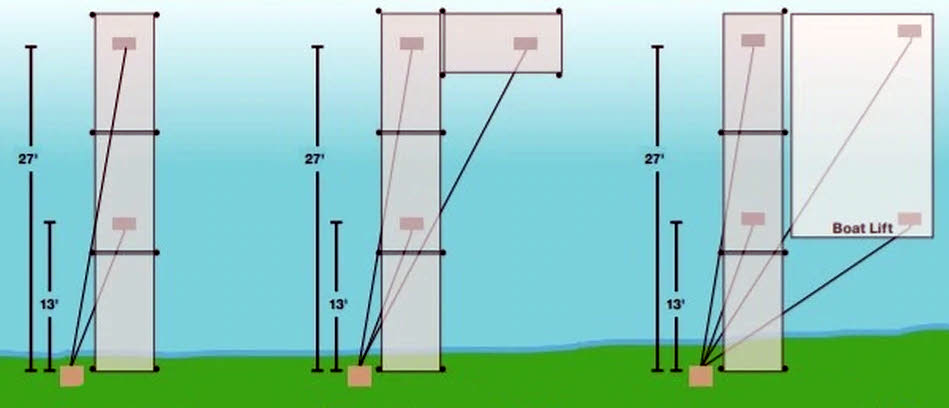
The pond report also has information on:
Algaecides & Bacteria | Deicers & Bubblers | Weed Removal | Liquid Bacteria | Pond Pumps & Fountains | Aeration | Winter Pond Care | Algae Control | Pond Liner | Muck Pellets | Build a Solar Aerator | Rotary Vane Compressors | Floating Fountains | Building a Pond | Linear Air Compressors & Pumps | Weighted Airline | Diffusers & Airstones | Solar Aeration Systems | DC & Battery Operated Pumps | Windmill Aeration | Dock Bubbler Packages | Building a Waterfall | Dyes & Colorants | Consultations | Questions & Answers | Links & Resources | Eurasian Milfoil | | Mosquito Control | Pondkeeper Treatments | Aeration Systems | Septic Bacteria | Grease Trap Blocks | Compost Aeration | Dissolved Oxygen Meters | SOTR & Pumping Rates | Portable Generators | Duckweed Control | Pond Plans & Pond Building Books & Guides |
|







 Our deicing experts have years of experience with design and installation of bubblers and de-icers in mining, stormwater, gas and oilsands and tailings ponds, ski hills, municipal docks and marinas and dam deicing and pumphouse deicing.
Our deicing experts have years of experience with design and installation of bubblers and de-icers in mining, stormwater, gas and oilsands and tailings ponds, ski hills, municipal docks and marinas and dam deicing and pumphouse deicing.
